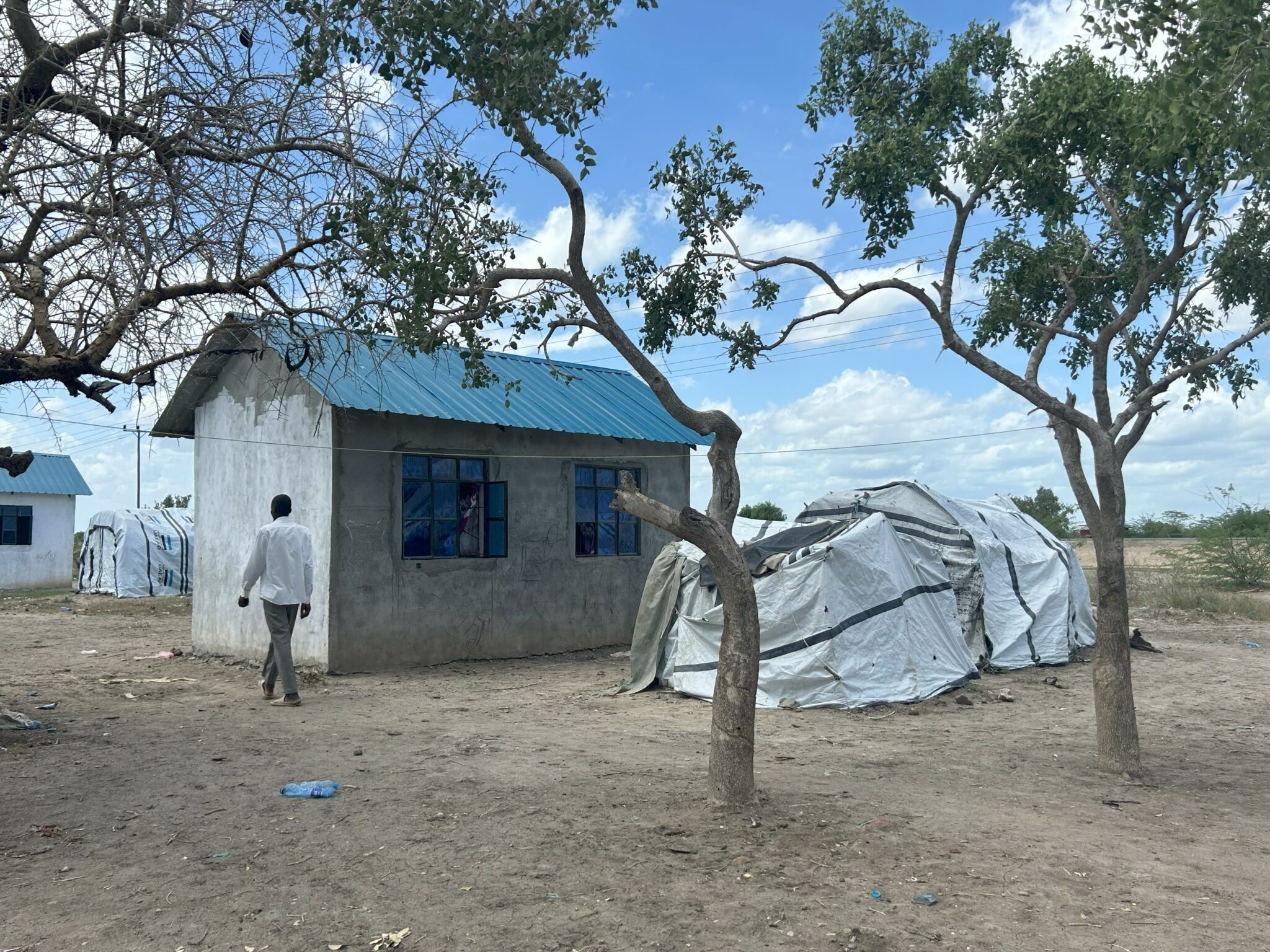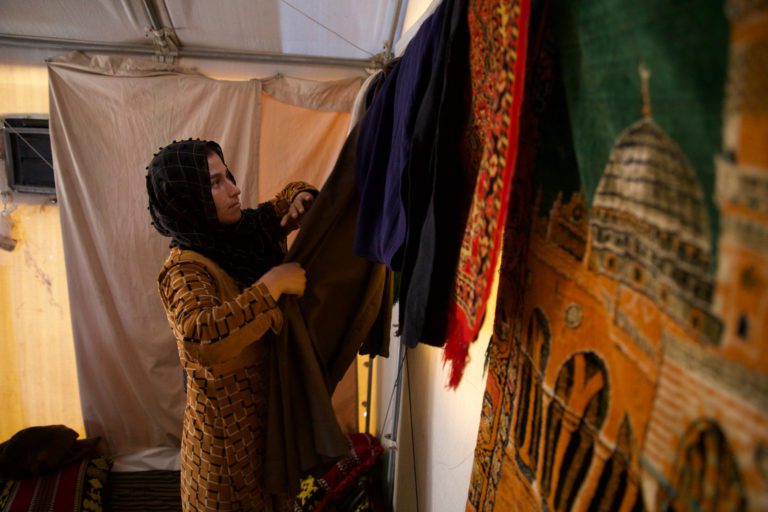For centuries, the Pokomo people of Kenya’s Tana River County lived in rhythm with the river’s floods: fishing, farming, and building their lives along its banks. However, as climate change has made flooding more severe and unpredictable, this delicate balance has been disrupted. Entire villages have been swept away, schools destroyed, and families displaced, sometimes year after year.
In response, the county government has launched an ambitious plan: to relocate thousands of residents to newly built “eco-villages” on higher ground, away from the floodplains. These new settlements offer more than safety. They aim to provide land ownership, clean water, schools, health services, and a future rooted not in survival but in opportunity.
But the move is not simple. Many still return daily to the river to farm and fish. Others struggle with limited access to water, long treks to markets, or disputes over their ancestral land. Yet, amid the challenges, new possibilities are emerging, including safer housing and resilient livelihoods adapted to a changing climate, for women entrepreneurs.
This is the story of a community in transition, between the past and the future, the river and the highlands, tradition and adaptation, as Tana River County navigates a new chapter in its long history of life alongside the water.
Together with Better Shelter, Habitat for Humanity Kenya launched a pilot program to test shelter frames using local materials in the new cluster villages.
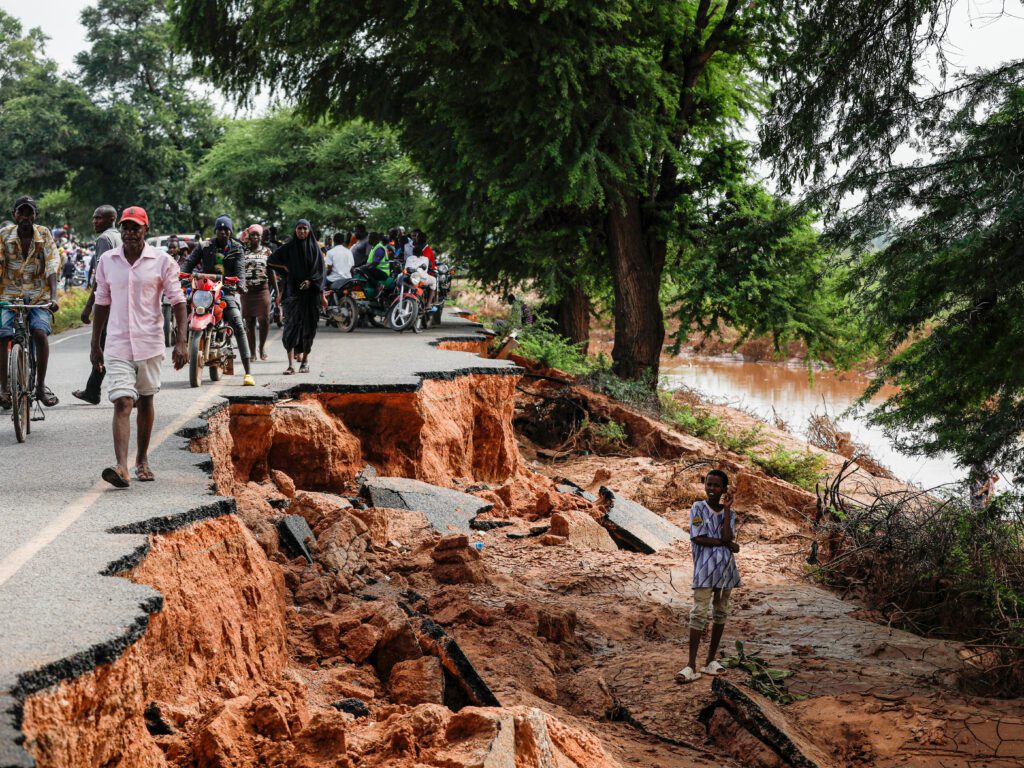
“On a good day, I can catch up to 90 kilos in my net. I keep some for myself and sell the rest to neighbours in the new cluster village and to people along the river.”
Justine, fisherman
Justine casts his net from a canoe carved from a single mango tree trunk. On the top side of the net, empty soda bottles keep it afloat; on the other, stones are tied to weigh it down so it sinks to the riverbed. A group of hippos surveys him from the opposite bank, snorting loudly.
Today’s net wasn’t in the water for more than thirty minutes, but it yielded a big catfish and ten silver-shiny tilapias. In the shade of a giant mango tree, Justine deftly slices the fish open and removes the spines and intestines with a large knife. To preserve the fish, he usually smokes and dries them, which allows the catch to last for several months.
Generations along the Tana
Since at least the 17th century, the Pokomo people have lived, fished and farmed along the banks of the wide, rust-red Tana River, relying on the seasonal floods to enrich the soil. When the water recedes, it leaves behind fertile silt, which is ideal for planting crops like maise, bananas, rice, and vegetables. The practice, known as flood-recession agriculture, has provided food, jobs, and shaped cultural traditions for generations.
But in recent years, the river’s rhythm has changed. The floods have become forceful and unpredictable. When heavy rains fall in the central highlands of Kenya, combined with water releases from the Seven Forks Dams, the Tana River swells and surges, often leading to destructive and sometimes deadly floods downstream in the Tana River County.
The same water that once nourished the land now threatens homes and lives.
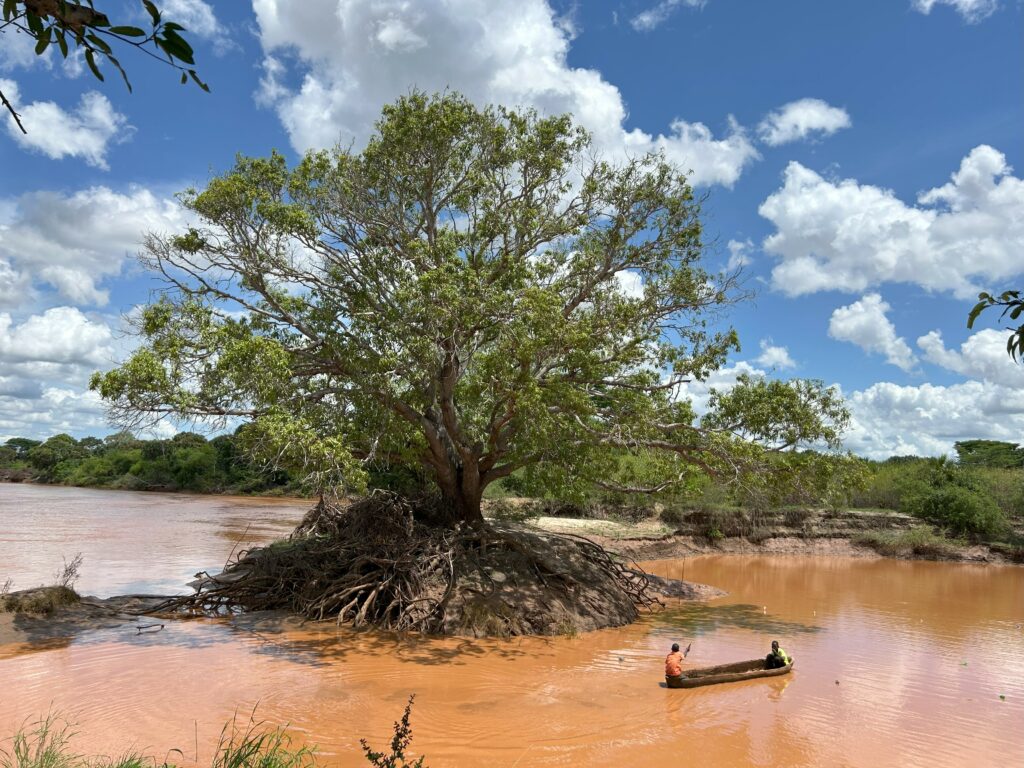
A changing climate
Following four failed crop seasons, the river flooded so much in 2022 that it claimed 21 secondary and 30 primary schools and washed away 127 hectares of land. Eleven people died, and large amounts of livestock were lost. In December 2023, half a million people in the country were forced to leave their homes due to the severe floods, some permanently and some temporarily, until the next one.
The Tana River County Governor knew he had to do something.
The masterplan
Clusters of temporary huts made of sticks and plastic sheeting line the verge along the main road across the county, connecting Mombasa and Garissa. Herders pass with goats and cattle, moving slowly under the open sky. The animals graze near the edge of the tarmac while their keepers, wrapped in shawls to protect them from the sun, guide them forward.
These nomadic herders are primarily from the Orma and Wardey ethnic groups and traverse vast landscapes, herding across county borders. They carry few possessions, moving with the rhythm of their animals and the seasons. When they stop for the night, they build simple shelters from twigs and fabric, creating temporary homes under the open sky. To contain the herd at night, the herders make a ring of branches around it. The animals instinctively stay within the circle.
The herders live off their livestock, drinking the milk, eating the meat, and selling them off to earn a living. As the animals reproduce throughout long migrations, the numbers continue to grow. The herders also know how to carefully draw small amounts of nutritious blood from the animals, which they drink mixed with milk.
The changing climate is testing both the mobility of nomadic herders and the stability of the farming communities.
The leadership in the county’s administrative capital, Hola, is developing bold plans to support those most affected. Ms. Mwanajuma Mabuke, the County Executive Committee Member for Housing, sits behind her large desk. On her right stands the Kenyan flag, and on her left, the county’s own. She has just returned from a few days of Eid celebrations.
“In recent years, we have spent 800 million Kenyan shillings, roughly six million US dollars, on restructuring after the floods,” she says and continues, “but with every new major flood, more infrastructure and homes are destroyed.”
The county governor, Mr. Gothana S. Gadae, developed an unconventional idea: to relocate entire communities several kilometres away from the vulnerable riverbeds. The vision was to establish “eco-villages” closer to the main road: settlements that would be sustainable, diverse, and community-led, nestled in the arid highlands of Tana River County, with sandy soil, scrubby green bushes and low trees.
“The county’s response to the flooding crisis is his brainchild. Everyone thought he was mad. Move entire villages?”
Ms. Mwanajuma Mabuke, County Executive Committee Member for Housing
But the urgency of the floods demanded bold solutions, and soon, the plan took shape. In 2016, a master plan was developed for 42 cluster villages, which included schools, clinics, water and sanitation facilities, and homes.
The county issued allotment letters to relocated families to avoid tensions between clusters and neighbours, granting them 30-by-30-metre (100-by-100 ft) plots where their new shelters stand. The move provides not just land but a sense of ownership and stability. People know that if they ever return to the river temporarily, to farm or fish, they have a place officially theirs to return to in the highlands.
So far, 5,000 allotment letters have been issued, and 30 shelters have been built. However, the county lacks the funds to realise the ambitious project as fast as they want to, so it will take time.
Yet, for the relief that higher ground brings, leaving the fertile riverbanks has come with new tensions. In the Konani cluster village, farmers who once cultivated mangoes, bananas, and sugarcane now face court disputes over their former land. One retired chief claims it as part of his ranch. “The river took our homes,” said a farmer, “but now, someone else wants to take our memories.” For many, the plots allocated in the new clusters offer a fragile but precious hope: their land, safe from floods, and secure from claims.
Engaging the communities and nongovernmental organisations
The county knew it couldn’t realise its plan on its own and started engaging other actors. The NGO Habitat for Humanity Kenya was the first non-governmental organisation to partner with the county on the program to support shelter, water, and sanitation in 2022. They brought technical expertise and helped train local artisans to construct shelters in the new villages.
Shelter pilot to evaluate different types of local materials
Together with Better Shelter, Habitat for Humanity Kenya launched a pilot program to test shelter frames using local materials in the new cluster villages. These include manually pressed and sun-dried bricks made from mud, water, and river sand, coral stone from the coast, rammed earth, hollow blocks, cypress timber from a nearby county, locally sourced iron sheets, and tarpaulin. Fifteen test shelters were constructed, and families with special needs were among the first to move in, helping evaluate the livability of each design in real-life conditions.
Habitat for Humanity developed a household selection tool and criteria matrix to guide this process, ensuring that the most vulnerable were prioritised. This tool has since been adopted by other NGOs working in the area.
Evaluating which techniques performed best, considering durability, comfort, cost, and suitability to the local environment, is ongoing.
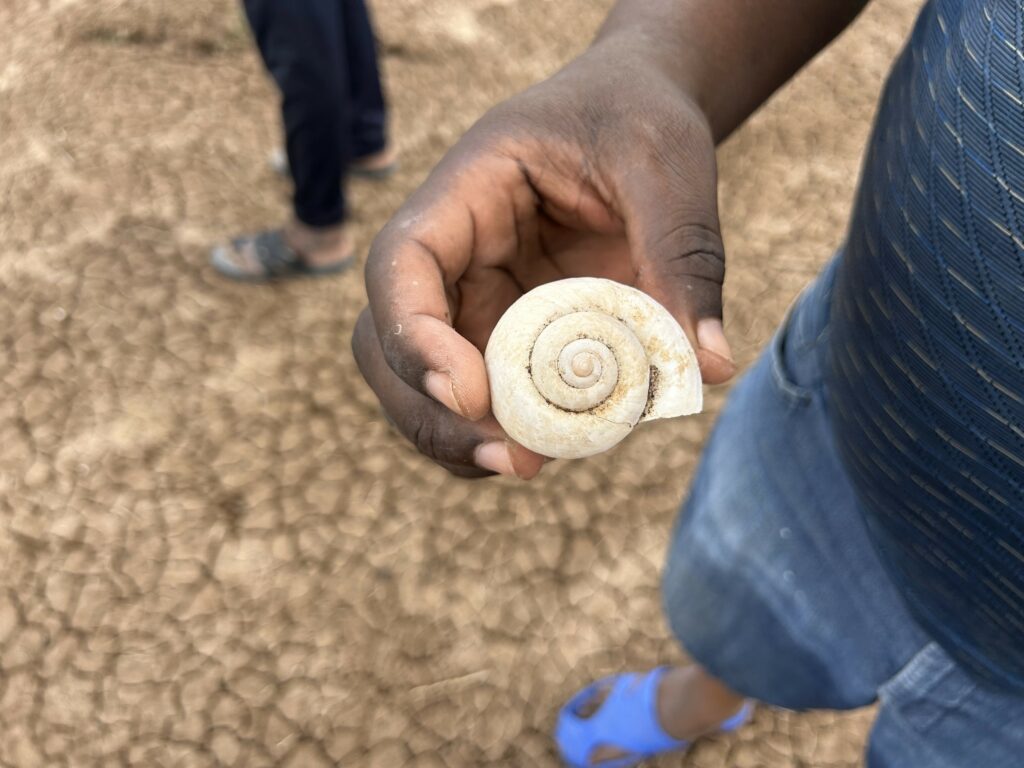
“The approach was rooted in local knowledge: understanding the terrain, the soil structure, and the importance of community ownership. The goal was safer housing and an opportunity for livelihoods.”
Jeremia Nkindu Barisa, Lead Artisan at Habitat for Humanity Kenya
Jeremia has kind eyes, and with his deep voice, he moves effortlessly between English, Swahili, and the local language, Pokomo.
Whichever cluster village Jeremia arrives at, he is greeted by the elders as a member of the community and as a friend by the children. He left a job at the county government to work full-time in the clusters, collaborating closely with artisans to build the new shelters.
Robust shelters are not just about creating a home on higher grounds; they also protect from outside threats. Crocodiles, hippos, lions, hyenas and leopards live near the banks of the river. In some river communities, residents have strung up wire fencing two meters high to prevent elephant herds from venturing too close to their homes. Because of the floods, wild animals are pushed closer to human settlements or become disoriented when their natural habitats are submerged.
“We worry about the wild animals that roam around at night. They come close to our villages and sometimes attack,” says a woman in the Konani cluster village.
Changing people’s behaviour
During the programme’s implementation, Habitat for Humanity and other organisations have made many visits to the villages along the river to inform about the dangers of living too close to it.
“It is, of course, difficult, and it takes a long time for people who have lived along the river for generations to accept that they must leave,” says Charles Misao, construction supervisor at Habitat for Humanity Kenya.
The river is still within reach of some of the new cluster villages in the highlands. Residents walk the few kilometres every day to farm, collect water, and catch catfish, mudfish, and tilapia. They return to the village in the evening. The fisherman, Justine, is one of them.
Other new villages are too far to return to the river every day. Some people move back temporarily to their former homes near the riverbanks—if the structures are still standing—or they build makeshift shelters from whatever materials are available. There, they farm and fish as they always have, until the next flood forces them to return to their new village again.
Alice lives in the Konani cluster village, far from the river.
“Sometimes, I walk to the nearest town for two hours to wash other people’s clothes. They give me some water, and I wash the clothes in a bucket outdoors. I get paid between 50 and 200 shillings,” she says.
That amount (equivalent of $0.40 to $1.50) might cover a small packet of maize flour or part of the fare for a motorbike taxi.
Alice sits on a blue plastic chair in front of an open window in a pilot shelter that belongs to her eighteen-year-old niece, Pauline. It’s cooler here than in the makeshift shelter made of branches covered with tarpaulin that Alice sleeps in at night. Pauline is at a hospital a few kilometres away, being treated for an ulcer. Alice fans her face with a piece of cardboard. Outside, it’s over thirty degrees and humid. The rains come every day now, and new floods are expected within days.
The men in her cluster village earn a meagre living by collecting and selling firewood, burning coal, or doing daily wage construction work.
More than 5,000 households need improved shelter
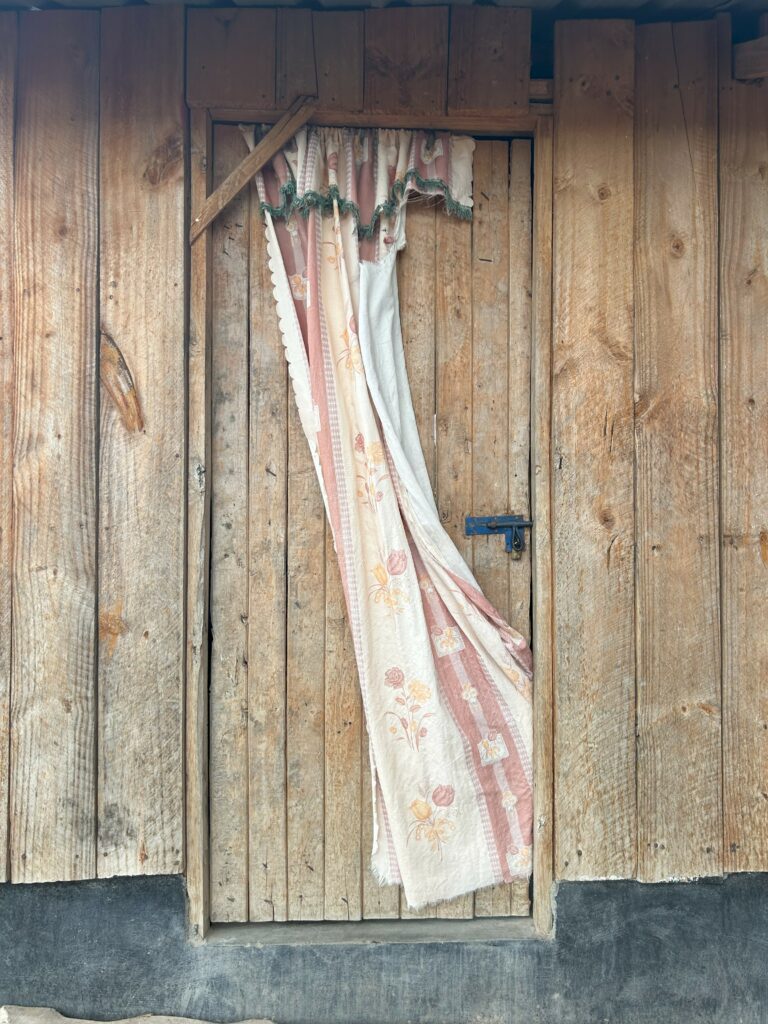
Nine out of ten residents in the cluster villages of Tana River County are Muslim, and the rest are Christian. Despite differences in faith, the communities belong to the same ethnic group, Pokomo, and are closely knit. Interreligious marriages are common, and wedding celebrations bring everyone together with music, dancing, and shared meals that last for hours.
In the Mwani cluster village, a small green mosque now stands at the heart of the community. For now, Christian residents gather to worship in one of the pilot shelters, with hopes of building a church in the future.
The vision for these eco-villages is ambitious, but limited resources mean that many families still live far from essential services. The nearest hospitals are several kilometres away and challenging to reach, especially at night, when wildlife and insecurity pose real dangers. Children walk long distances each day to get to the closest schools.
More than 5,000 households in the county urgently need improved shelter. With increased support, many more shelters could be built, prioritising families with disabilities, single mothers, the elderly, and those in high-risk flood zones. Now, with the partnership of donors, the county and its communities can continue building toward a safer, more dignified future.
Facts
- The Tana River floods twice a year, part of a seasonal cycle that has historically made farming possible by enriching the soil along its riverbanks.
- Heavier rainfall occurs upstream in the central highlands, around Mount Kenya and the Aberdare Range, causing the river to swell with increased force when it reaches Tana River County.
- While flooding is essential for agriculture, the unpredictable and excessive flooding in recent years has become destructive.
- Some families who return to their ancestral lowlands during dry periods go back to the cluster villages when the floods come.
- The intensity of the floods has led the river to change course suddenly, washing away entire villages without warning.
- Wildlife is also affected. As their habitats are flooded or eroded, crocodiles, hippos, elephants, lions, leopards, and hyenas are increasingly seen near the villages, heightening risks for local communities.
- Forty-two cluster villages have been established, of which 14 are currently active, accommodating approximately 800 households.

